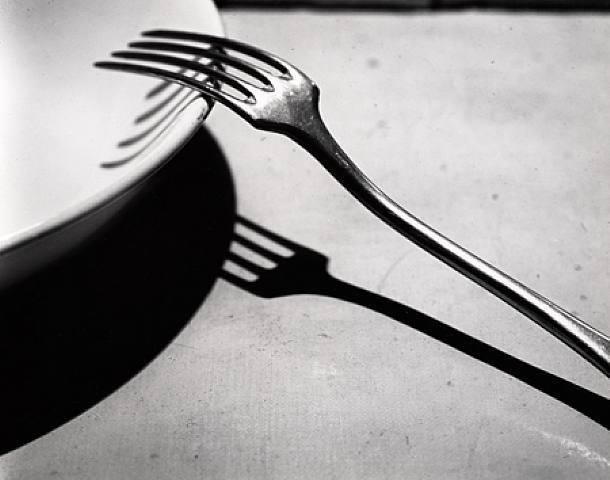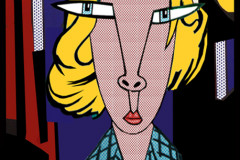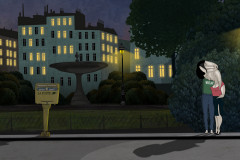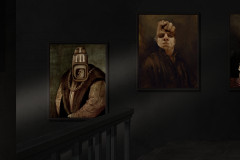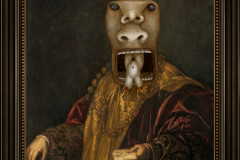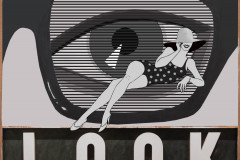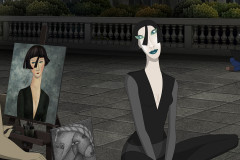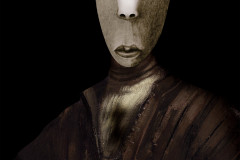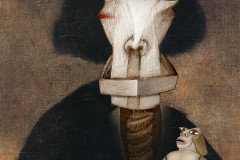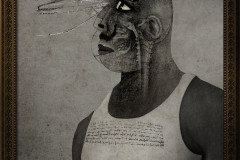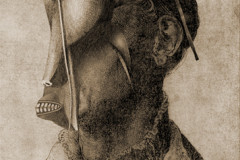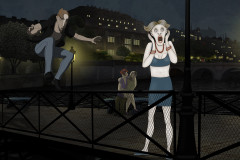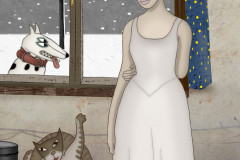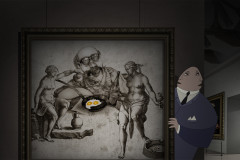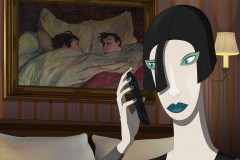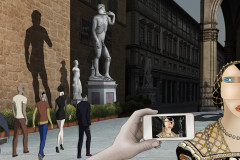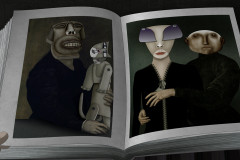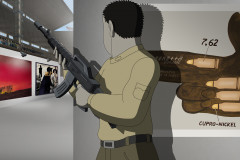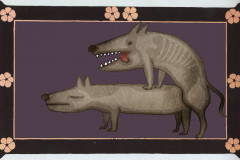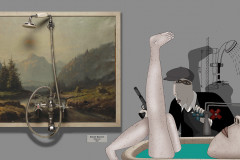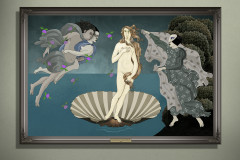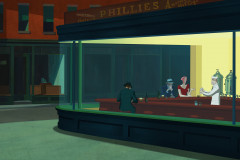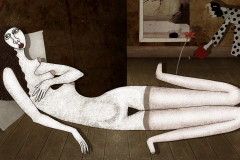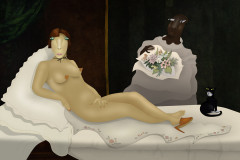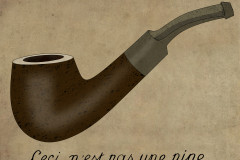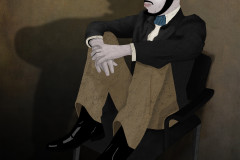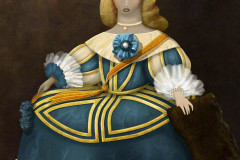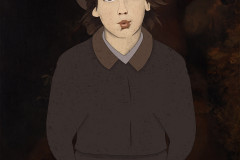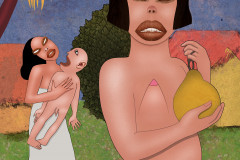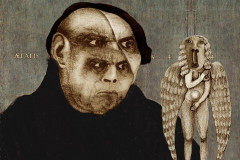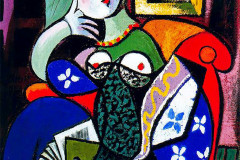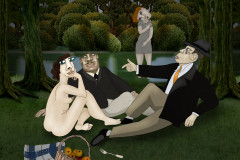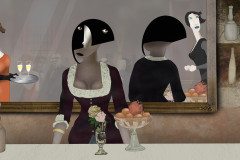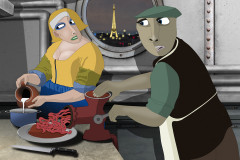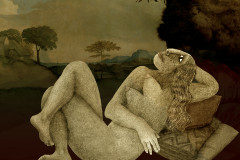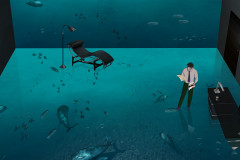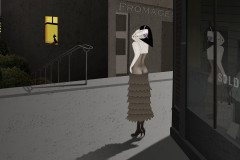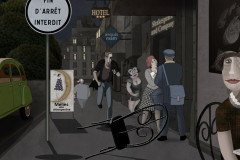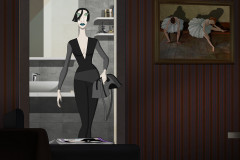Kertész, André (1894-1985): Villa, 1928. A Kertész Andor néven Budapesten született fotóművész 1925-36 között Párizsban, az avantgárd művészeti világ központjában lett igazán híres művész, majd a nácizmus elől New Yorkba települve - nem könnnyen, de – Amerikában is elismertséget szerzett. Villa című fotója az egyik leghíresebb képe, amely lehető leghétköznapibb tárgyak végtelen egyszerű kompozíciója. „Akár mi is csinálhattuk volna”, ott felejthettük volna az étkező asztalunkon ezt a csendéletet, mint ahogy a Ruben Brandtban is történik: egyik este a Polyart Klinika páciensei nevetgélve beszélgetnek orvosuk diktafonjának lehallgatása után, s az asztalon ott van előttük Kertész „villás tányérja”, csak itt nem üres, hanem rajta van a vacsora maradéka.
Kertészt nem lehet stílusa alapján beskatulyázni: egyszerre volt a hétköznapi pillanatképek fotósa, a kísérletező avantgárd alkotó (keress rá az igazán különleges „Torzítások” sorozatára!) és a már-már konstruktivista precizitással szerkesztő, absztrakt irányba haladó művész. Villa c. fotója az utóbbi kategóriába tartozik, hiszen a rendkívül egyszerű tárgyak geometriáját hangsúlyozza. A közeli nézetben a tál szélének köríve és a villának a képet átlóban átszelő nyele határozza meg a kompozíciót – ráadásul az erőteljes megvilágításban mindkét forma megismétlődik az árnyéka által. A villa fogai két felületre is árnyékot vetnek, az asztalra és a tányérra – ezektől a kis vonalaktól ritmikusabb lesz a kép. A Ruben Brandtban látott verzióban még a halgerincen sűrűn sorakozó szálkák is átveszik ezt a ritmust.
André Kertész (1894–1985): Fork, 1928
Born in Budapest as Kertész Andor, the photographer rose to fame between 1925 and 1936 in Paris, the center of the avant-garde art world. He later fled to New York to escape Nazism, and—though not easily—he eventually gained recognition in the U.S. as well. His photograph Fork (original title: La Fourchette or Villa) is one of his most famous images, composed of the simplest, most everyday objects in a stunningly minimalist arrangement. “Anyone could have taken this,” one might think—it looks like a still life accidentally left on a dinner table, just as it appears in Ruben Brandt, Collector, where one evening the patients of the Polyart Clinic laugh and chat after eavesdropping on their doctor’s recorder, and on the table before them sits Kertész’s “fork on a plate.” Only here, the plate isn’t empty—remnants of dinner remain.
Kertész defies stylistic categorization: he was simultaneously a chronicler of the everyday moment, an experimental avant-garde artist (look up his extraordinary Distortions series!), and a precise visual composer bordering on the abstract. Fork belongs to the latter. It emphasizes the geometry of extremely simple objects. In close-up view, the arc of the plate’s rim and the fork’s diagonally placed handle define the composition—and in the dramatic lighting, both forms are echoed by their shadows. The fork’s tines cast shadows on both the table and the plate, adding rhythmic lines to the image. In the film version seen in Ruben Brandt, even the fine bones of a fish spine pick up and continue that rhythm.







